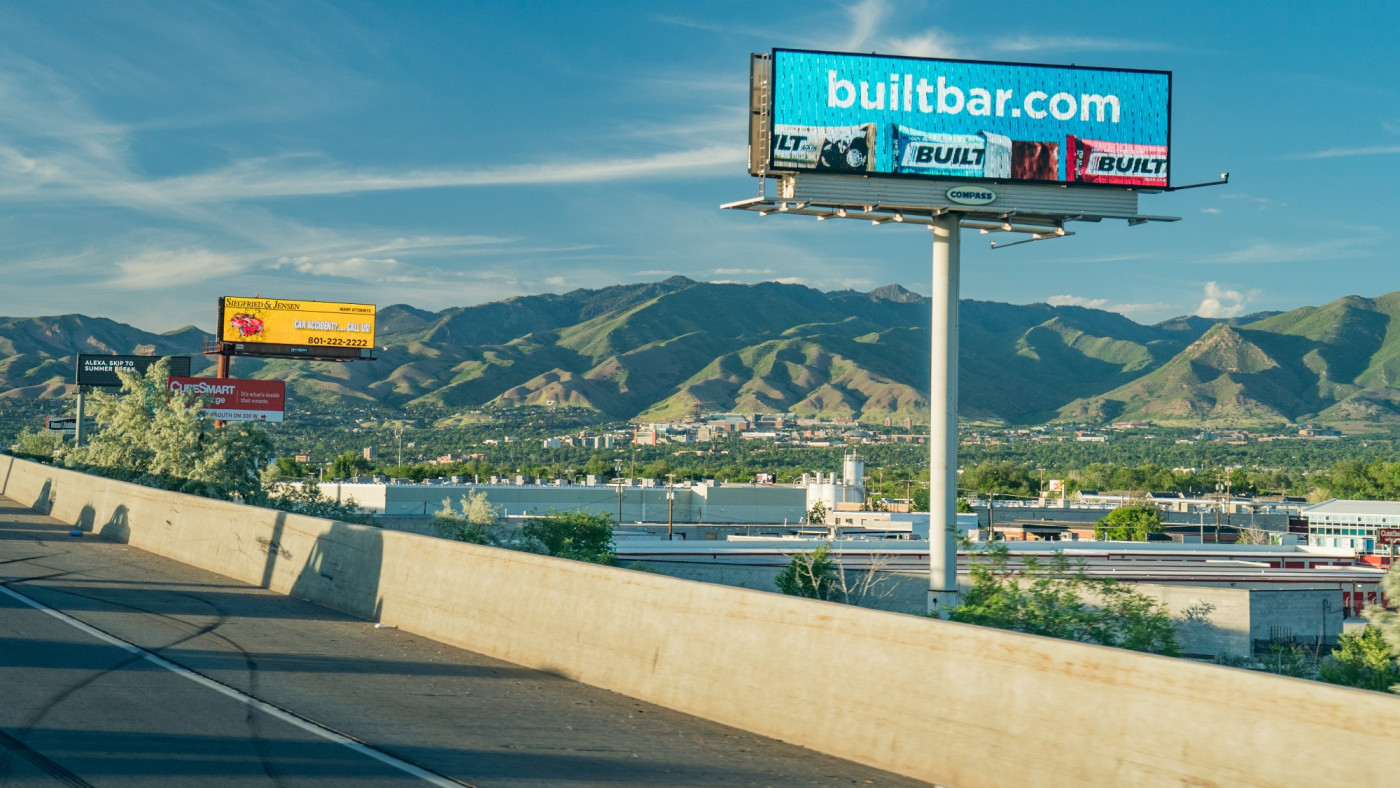With deep roots in the past, a modern-day billboard campaign in Orem targets advertisers.
In the 1920s, a group of women’s associations, including the Garden Club of America, published a pamphlet titled “The National Committee for the Restriction of Outdoor Advertising.” By contacting companies that used billboards and asking them to consider other promotional methods, the Committee was successful in getting some big brands to reduce their billboard usage. B.F. Goodrich Rubber, Champion Spark Plug, Pillsbury Flour, and Gulf Refining Co. were some of the corporate giants who “took the pledge.”
The Committee focused on two things: “…arousing Public Opinion to the danger of allowing the present methods of outdoor advertising to continue,” and “drawing out an expression of the Public Opinion and taking it directly to the advertisers.”
For one neighborhood group in Orem, the 1920s campaign still has currency. A modern-day campaign targeting advertisers to reduce the impact of billboards in Orem’s Lakeview, Grandview and Lakeshore neighborhoods has been going strong for more than 25 years.
“In our experience, given the hours and hours we’ve spent in meetings with them, our state and local government officials are powerless or apathetic about mitigating billboard blight,” said one Lakeview business owner and campaigner. “Our effort involves appealing respectfully to advertisers about the impact they’re having in our community. The golden rule, after all, is ‘he who has the gold makes the rules.’ In this case it’s the customers.”
What stands out to the community group about the Garden Clubs’ campaign is the commitment of the advertisers to stop buying billboards. “That’s exactly what our little neighborhood campaign is all about,” they say.
Campaign representatives say they’ve reached out to national and international companies, and the response has been terrific. “Some companies have told us they didn’t know precisely where their advertisements were running, or the impact the advertisements were having on our neighborhood’s quality of life. They instructed their marketing teams to have their outdoor advertising provider move the ads elsewhere.”
Other successes for the neighborhood group have included removal of a digital billboard face. And they were able to get louvers installed on two digital billboards, helping to diminish some of the light projecting from the sides of the signs.
Their outreach has not seen the same level of success with advertisers based closer to home, they admit. “In general, smaller local companies have pushed back when approached. It’s been a real education. We hope that by continuing our engagement with them, we can get more of local businesses to change their minds.”
Utah has a reputation as a business-friendly state. When asked if reducing billboard blight makes us any less business friendly, another campaigner replied: “We think the effort to reduce billboard pollution makes us more business friendly because it aligns companies to work with their customers on quality-of-life issues. Endearing people to your company—that makes you a stronger business.”
The neighborhood group recently posted a change.org petition aimed at “encouraging Utah advertisers to take immediate action to find safer ways to advertise, or limit their advertising to non-residential areas.” And they’d love to see other residents join their effort. “An email to an advertiser that comes from a fresh contact is really impactful,” the group notes in its materials, adding: “Google Reviews are another great way to get the attention of companies.”
The group also offers to share with other community groups the emails and letters they have sent to advertisers over the years. Anyone interested in joining their Orem-area campaign, or starting one in their community, can contact the group at






